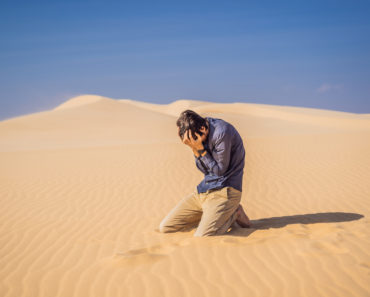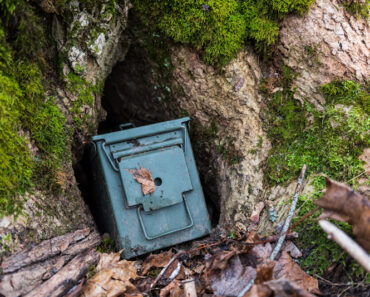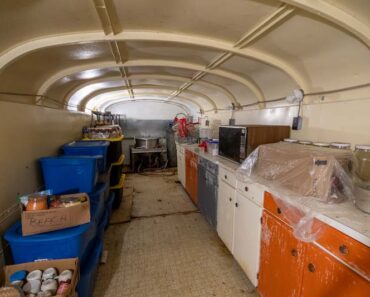Power outages are a frequent occurrence in our country, and it’s no wonder, given that the power grid is outdated and poorly maintained. In fact, for a first-world nation, we somewhat fail to take care of our infrastructure, and recently, it seems that the government is taking action only after a crisis occurs.
I’ve said it a hundred times before, and I will probably say it a hundred times more: the government and local authorities won’t be able to help you when the brown stuff hits the fan. They don’t have the resources to deal with large-scale disasters, and past events have shown us how easily the wheels of this public-funded machinery can break.
So, it’s up to you and you alone to keep your family safe during a power outage and provide them with everything needed to live comfortably through the ordeal. Since many folks have asked me lately about what power outage supplies they should have on hand, I decided to provide an answer that would reach a broader audience.
Below is a list of items that everyone should have in their home before the next blackout. It’s a good list for beginners but also serves as a reminder for more advanced preppers.
Power outage supplies:
Water
Keeping an ample quantity of water inside the home is highly recommended these days, especially if you live in arid areas or zones that experience frequent heat waves. Storing water has become the norm in the last two decades, and one indicator of this trend is the abundance of water storage containers flooding the market.
If you are familiar with my writings, you probably know that I’ve covered the topic of storing water on multiple occasions, and I’ve discussed the two main challenges of this practice extensively. I’m referring here to the bulkiness and weight of water and the need for adequate storage space and proper containers. While WaterBob is my favorite solution, it’s not the only one, as collapsible BPA-free containers in various shapes and sizes are now available. So, if you find solutions for these two issues, you should be set for a few months.
Non-perishable food
When the power goes off, the gas will soon follow. Some may suggest using a grill or camping equipment stored inside their homes to prepare a hot meal, but that’s not a viable option for everyone. Moreover, the nature of a disaster can impact the time frames of each activity, leaving you without the luxury of showcasing your culinary skills. That’s why non-perishable food is the way to go, and here are just a few examples you should consider:
- Crackers and similar items
- Canned soup and other canned goods that can be eaten as is or require minimal preparation
- Trail mix and protein bars
- Tuna and peanut butter, which pair well with crackers
- Dehydrated items if you have a good water supply
It’s important to mention that food storage is a matter of personal preference and tolerance. You shouldn’t store food items that your family doesn’t eat just because some survival guru told you to do so. Also, store only items that you know for certain won’t cause food fatigue or allergies.
Light sources
The list of light sources can be extensive, but you can never go wrong with an old-fashioned flashlight and a pair of batteries. For instance, I keep a flashlight in each room of the house, ensuring they won’t run out of power during extended use. Here’s a tip: use duct tape to attach spare batteries to each flashlight. Additionally, remember that all batteries have a self-discharge rate, so it’s essential to check them periodically for safety. Consider investing in a battery tester as well.
As for light-generating devices, there are various options available, from hand-crank flashlights to collapsible solar lamps. The choice depends on your budget and needs. Some individuals may try to illuminate their entire home during a power outage due to feeling uneasy and fearful in darkness.
If storing candles seems suitable for your home, go ahead. However, it’s not an option for me due to having pets (cats and dogs) and small children. I won’t be able to monitor everyone all the time, and I don’t want to add the risk of a house fire to my list of worries.
First-aid
Get all the first aid supplies your family needs and ensure the first aid kit covers all the basic necessities. One of my recommendations is to build your own first aid kit, as you will know precisely what will go in it, the number of items you’ve assembled, and you will also have the luxury of learning how to use those items and testing them before they are actually needed.
My second suggestion is to spend some time with your loved ones and ensure everyone knows how to use the contents of your first aid kit. Many people get injured during power outages, and broken limbs are quite common. If you’re unable to use the first aid kit, make sure someone else can.
Also, consider the medications your family members need and ensure you have sufficient stocks and the items required to keep them at a stable temperature, as some medications require specific temperature ranges to maintain their potency and curative properties. One last tip: if someone in your family is visually impaired, ensure they have a spare pair of glasses. The last thing they need is to deal with broken spectacles while stumbling around.
Safety items
No, this section is not about home defense and gun ownership but rather about items to keep you and yours safe in case of accidents. Here are a few suggestions that I highly recommend:
Smoke detectors/alarms: These should be in every household.
Carbon monoxide detectors: These are highly recommended if you plan to use an open flame inside the house. Many individuals may decide to heat their rooms or prepare various meals using improvised fires, and without proper ventilation, the risk of CO poisoning increases exponentially.
Fire extinguisher: An accidental house fire can occur due to various reasons during a blackout, with the number one cause still being the use of candles. I recommend keeping a fire extinguisher in every room and ensuring it’s within reach so that you won’t have to search for it when you need it the most (mounting it on a wall is also recommended).
Surge protectors: During blackouts, surge protectors play a crucial role in safeguarding your electronic devices from potential damage caused by power surges when electricity is restored. Ideally, for comprehensive protection, consider installing a whole-house surge protector at your main electrical panel. This can safeguard all electrical devices in your home from large surges caused by external events.
Keep in mind that you need to ensure you have the means to protect your home from accidental fires and CO poisoning. These items are recommended to be available at all times, not just during blackouts. Unfortunately, most individuals don’t realize how important these items are until they experience a prolonged blackout or, even worse, an accidental house fire.
Items to create electricity
One trend that becomes increasingly evident with every passing disaster in this country is the shortage of power generators and the spike in prices just before an emergency occurs. Folks become desperate and try to get their hands on whatever power generator they can find when a hurricane is at their doorsteps.
This high demand is created by natural disasters approaching a certain area, negligence, and failure to prepare. In fact, many people are looking to buy a generator because they damaged the one they had or because they chose the wrong one and it’s not able to meet their needs..
I’ve written about how generators in these articles here:
I recommend reading them because they provide a good insight into the selection process of a generator.
Besides the classical power generator, there are also various electricity generators that do not use fuel; they utilize mechanical force, specifically your legs. If you are in good physical shape, you can consider getting one of these. Not only will it allow you to power your devices, but you will also be able to incorporate a cardio workout into your routine.
Examples of such generators include:
Pedal Power Generators: These generators consist of pedals that you can cycle to generate electricity. They are often portable and can be used indoors or outdoors. One example is the “K-Tor Power Box,” which converts human power into electricity.
Bicycle Generators: These are similar to pedal power generators but are typically designed to attach to a bicycle. As you pedal, the generator converts your kinetic energy into electrical power. The “Reelight NEO” is an example of a bicycle generator that can charge electronic devices while you ride.
Hand-Crank Generators: While not specifically using leg power, hand-crank generators can also provide electricity through mechanical force. You turn a handle or crank to generate power. The “Goal Zero Torch 250” is an example of a hand-crank generator that can also serve as a flashlight and emergency light source.
These alternatives offer sustainable ways to generate electricity while also promoting physical activity.
A last word
I recommend conducting an assessment of your home to determine what types of supplies you need to survive a prolonged blackout without significantly disrupting your way of living. Then, you can review the supplies suggested in this article and choose what you need based on your budget and personal preferences. With the plethora of alternatives available on the market nowadays, it is virtually impossible not to find what you need.
I hope this article has helped you identify what will be necessary during a blackout. If you come across a particular item that you believe others should know about, please utilize the comment section below to share your insights with us.



![PTW Episode 80- Are you Conflicted? [PODCAST] PTW Episode 80- Are you Conflicted? [PODCAST]](https://survivalcove.com/wp-content/uploads/2022/02/prepper-talk-podcast-banner-370x297.jpg)




![10 common plants you can turn into flour [Part II] 10 common plants you can turn into flour [Part II]](https://survivalcove.com/wp-content/uploads/2024/04/shutterstock_376265131_edited-370x297.jpg)



















